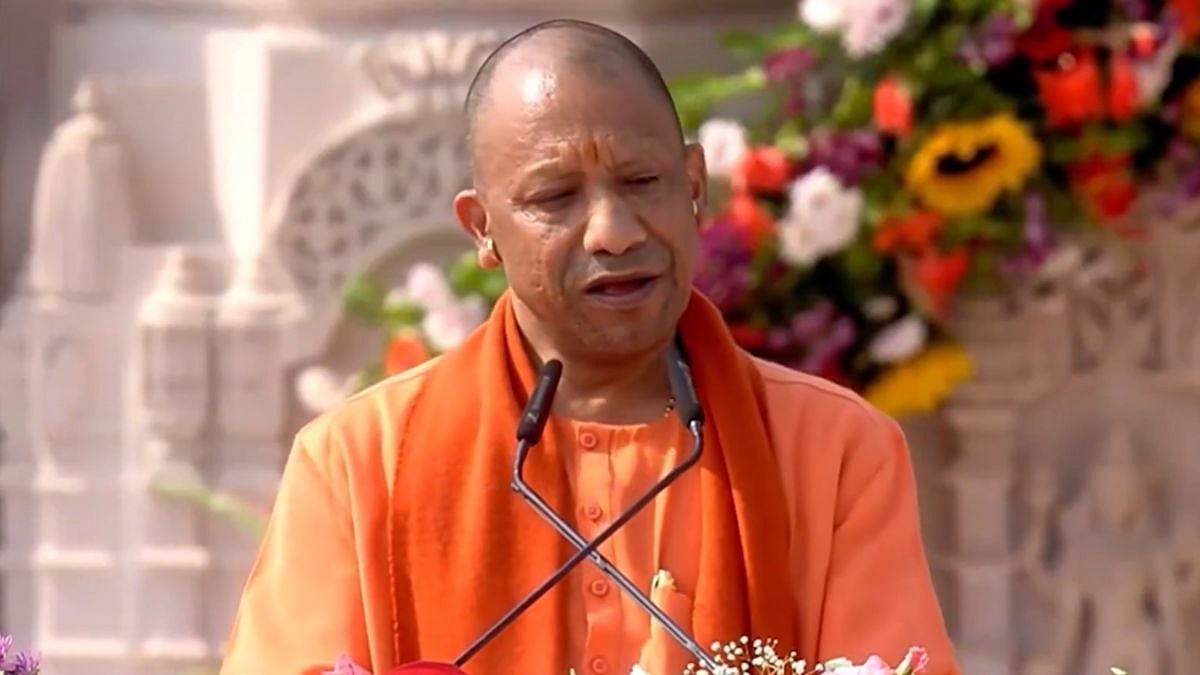Mumbai-based Purshottam Sinha’s two-bedroom house on Peddar Road flaunts Warli paintings painted over the walls of his living room and a large size peacock of tribal Gond art. “Our old house had Egyptian artwork as we loved that. But when we bought a new place for ourselves, it was my wife’s idea to use local art. We have also used some antique Maharashtrian style decoration in the house to complement the interior,” says Purshottam, a builder.
Indian architecture, both new and old, defines regional skylines and has a lasting impact on our perceived memories of a place. And while historic architecture has its own charm, modern architecture too can be inspiring. We all have grown up seeing palaces, forts, and temples laced with old regional arts on walls and ceilings, however, with the highly marketed urban brands and machine-made products these local arts, crafts, and designs have seen a major setback.
But, now, some Indian architects are incorporating regional art and using locally sourced materials into buildings and spaces to create environments that instill a sense of belongingness within the people and communities who engage with them.
A multi-generation family home in Delhi opted for a large commissioned hand-painted tree of life in the Madhubani-style frames on each floor of the house. Hand-dressed slabs of sandstone forms a partition that sits as an object of interest at the entrance while also appearing as a backdrop for the dining setting is another house’s appearance in the capital city. The house built by Sidhartha Talwar, principal at Studio Lotus in Delhi, is an intricate configuration of stained-glass windows in the stairwell which brings in flickering hues of coloured light throughout the day.

“By using locally-sourced materials, indigenous artisanal craft, and bespoke detailing, we strive to elevate the quality of living in a manner that is appropriate for our context but also suited to individual tastes,” says Talwar.
While these interventions help promote and preserve traditional art and local design techniques while keeping the luxury aspect intact, it also reduces the cost and keeps carbon emissions in check, as materials and labour don’t have to be transported over long distances.
Consequently, this architecture is closely related to its context and is aware of the specific geographic features and cultural aspects of its surroundings, as it is strongly influenced by them.

Infusing luxury in homes through the authenticity of material usage and richness of spatial expression aimed at supporting the residents’ lifestyles, community dynamics, and larger aspirations, the architects are challenging the approach to luxury that is predicated upon the use of imported or expensive materials. “The understanding of luxury should be governed by the principles of conscious design that encourages minimising consumption and empowering all stakeholders,” says Talwar.
Built with locally sourced materials, these spaces celebrate regional crafts from across the country. Some of the arts, which have been proudly flaunting their richness on the walls are Godana, Warli, Pattachitra, and Gond paintings, the metal craft of Bastar and Sanjhi paper stencilling.
Bengaluru-based architect Shalini Chandrashekar of Taliesyn Design and Architecture, recently collaborated with a mural artist from Kerala to make a colour-doused traditional Kerala floral mural that was created on a focal wall of a lobby in a house.
“The idea was to enable pre-visualisation of the green space you enter into from the lobby. It is an artistic expression of the interplay of landscape and the soul of the built area, all with natural dyes for colours,” says Chandrashekar and adds that she also employed traditional materials like the variegated Kota flooring with patterned Athangudi tiles and tall sculpted pots in earthen hues sourced from a local artist.
“I saw the 3D renders of the space, and then I went to see the site. The terrace had ample greenery, so I decided to paint something inspired by that based on the theme of nature. The client showed a few reference images, but I did the final idea for the mural independently,” says Prabeesh Chammanur, a mural artist from Kerala, who completed the 12-foot-high mural in about a month.

The artist says he used five natural colours that are derived from the earth. Chammanur specialises in mural art based on mythological themes and it was a different experience for him to sketch acrylic painting on canvas which was inspired by nature.
“I have done some murals in temples with thin brushes and painted in a semi-traditional fashion. This project was different because it did not have any religious connotation, but inspired by nature,” says the artist.
Although the trend of incorporating local art may seem new, architects have been exploring regional narratives and local skills for a decade now. The approach to experimenting and re-interpreting traditional art is also seen as contemporising craft to make the obscure indigenous craft relevant to the young generation and the years to come.
The architects share that the usual approach towards creating crafted expressions varies from developing a narrative for an integrated architectural scale to small interior treatments. “It mostly depends on the layering in the details and tactile quality of space to incorporate objects, artifacts, murals and art pieces, but we always thrive to shape the spatial experience through impactful storytelling gestures,” says Talwar.
Chandrashekar adds that the process of building a space which is conventional yet modern needs collective strength and pushing the limits. “This process of breaking from conventional is often a rigorous and demanding process,” she says.
The art of building these unconventional spaces provides an important link to the past and supports a strong sense of local identity. Together with other cultural expressions, the abodes and workspaces provide a foundation for the shared humanity of communities and reaffirming their identity.










